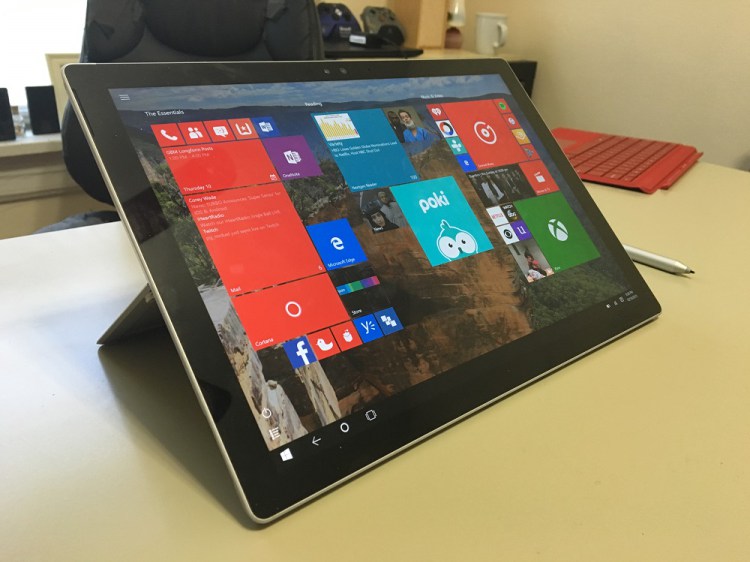Starting October 22nd, many people will start the process of upgrading from previous versions of Windows to Windows 7 RTM. After spending a long while with Windows 7 as my main OS since January 7th, I am excited about this major release that introduces many benefits to daily experiences on the PC at home and work. I want to take a look at installing Windows 7 and I will also be doing an Upgrade Story in a future post, just to get an idea of what its like. Let’s get started!
Windows 7 Install window - are you ready?
Depending on how you acquire/receive Windows 7, either by downloading through Microsoft subscription services such as MSDN or TechNet or through a retail purchase on DVD, there are a number of ways you can get it installed on your PC. If you downloaded Windows 7, you can burn the ISO file, which is a replica of a disk image that contains the operating system to a blank DVD or you can install from the image itself by using a free utility such as CloneDrive or Daemon Tools that mounts the ISO file as a virtual disk. My installation was done from a physical DVD since that replicates a real world scenario, in a future post, I’ll take a look at burning the ISO file.
Note: Microsoft recently launched a special Student Upgrade program, which allows students with a valid .edu account to purchase Windows 7 Home Premium or Professional Upgrade versions for $30. You have a choice of downloading the operating system or purchasing it on physical DVD for $13. To learn more about the program, click here
Windows 7 Copying Temporary Files and Starting the Install Process.
Beginning Setup
To begin the installation, click the Install Now button on the Install Windows window. If the Install Windows does not appear on screen, click Start > Computer > open the Windows 7 dvd, and double click file Setup.exe then click Install Now. Setup will start copying temporary files that assist the installation of the operating system. If you have installed Windows Vista before, the procedure is pretty much identical. Please note, that I started my installation from within a running installation of Windows Vista SP1. If you are doing a clean install, you could also boot from your Windows 7 disk and proceed with installation just the same. If you are planning on upgrading from Windows Vista SP1, you must launch Windows 7 setup from within a running installation of Windows Vista SP1.
You have the option of obtaining necessary drivers and software patches before installing.
Before Windows 7 starts copying Windows files to disk, you can check Windows Update for any important files and hardware drivers that might make the installation go as smooth as possible. It is always recommended you do so to prevent unexpected problems with incompatible hardware and software. Next you accept the Windows 7 End User License Agreement.
Windows 7 provides multiple options for installing.
Choosing your installation:
You have multiple ways of Installing Windows 7, you can do an upgrade from an existing version/edition of Windows such as Windows Vista SP1. Custom Install features advanced options that allows you to select a partition that you have created to install the OS on. In addition to that you can choose to do a clean install of Windows 7 which will remove any data currently stored on the disk you plan to install Windows. In my case, I have created a dedicated partition to install Windows 7 on. Learn more about Windows 7 upgrade paths here
Phases that the Windows 7 installation goes through.
Installing Windows
Windows will now begin copying files and restart several times during installation. A clean Windows 7 Installation goes through a series of steps which include:
- Copying Windows files
- Expanding Windows files
- Installing Updates
- Completing installation
The time it takes will vary depending on certain factors such as the performance of your PC: Processor speed, memory and disk speed. I installed Windows 7 on a system with a Intel Core 2 Quad 2.5 GHz processor, 2 GBs of RAM. Installation took approximately 14 mins and 30 seconds. During this phase, Windows 7 will restart several times, apply registry settings and test your video hardware performance.
Post installation Task (OOBE)
Out of Box Experience (OOBE)
Once Windows 7 has completed installation, you are taken to the OOBE, which consist of post installation task such as setting up a user account, entering a product key for the edition of Windows 7 you installed, choosing your Time Zone and joining a network. After these quick task have been completed, Windows 7 applies settings and prepares to load the Desktop for the first time.
Startup and Log in Screen
There you have it, you have successfully installed Windows 7. The installation process will of course vary across many systems, but my experience so far installing the OS on two systems has been a smooth one. I have put together a list of things you should take into account before installing or upgrading to Windows 7.
- You have two choices, you can either upgrade from Windows Vista SP1 by launching setup from within Windows and choose the upgrade option during the installation wizard; (Windows 7 requires that you have a minimum 16 GB’s of free disk space before upgrading). Note: Upgrades are not supported for Windows XP Professional x64 Edition at all; Windows 7 x64 requires a clean installation. Users of Windows Vista SP1 x64 can do in place upgrades to Windows 7 x64.
- Get Religion: Backup, Backup, Backup!As Murphy Law states, if it can go wrong, it will. Upgrading is a very complex process and there are often cases of failed upgrades from older versions of Windows. Causes can include, power outage during installation, hardware or application conflict. This is why you should always back upâ€, it’s better to be inconvenienced than having to start all over from scratch.
- If you are upgrading/clean install, disable any external or USB based devices you might have attached to the computer. Also, disable any Security software before launching setup and ensure that you meet the minimum system requirements for Windows 7.
– 1 GHz processor (32-bit or 64-bit)
– 1 GB of system memory (2 GBs for 64 bit)
– 16 GBs of disk space (20 GBs for 64 bit) Windows 7 uses approximately 10.5 GBs of disk space.
– DirectX 9 graphics with 128 MB of memory (WDDM 1.0 or 1.1 driver) – this is important if you want Windows Aero Glass user experience.
– DVD Drive
– DVD Burner and Internet access (if you do a digital download Windows 7)
– Technical know how to burn an ISO file to make an install DVD.
- You cannot uninstall Windows 7, if you need to use XP or Vista, you will have to reinstall it. If you are uncertain about upgrading to Windows 7, it’s always best to do a dual boot installation by installing Windows 7 on a logical partition or another hard disk. This option can be done during setup, simply click Custom (Advanced) and select the other partition you created to test Windows 7.
- Some of my devices and applications are not working, what should I do?If your Internet connection is working in Windows 7, I suggest you try obtaining the drivers through Windows Update. Click Start > All Programs > Windows Update > Turn on Windows Update. A list of available updates will then be downloaded, you will have the option to view them, do so and check off the appropriate drivers or software patches you need and click Install. You can also check the manufacturer’s website for patches, updated drivers or to simply find out about Windows 7 support for the particular product.For software, if you are running Windows 7 x64, certain types of applications will not work; these include Win16 applications and Win32 applications that use Win16 installers. You can also try running the application in Compatibility mode to see if it will work (full 32-bit application applications supported). Right click the programs executable > click Properties > Compatibility†tab > under Compatibility Mode†check the Run this application in compatibility mode for: box > click in the list box and choose a suitable version of Windows.
Learn more: Windows XP Mode for Windows 7
Certain applications might encounter problems with the User Account Control security component in Windows 7 because the application was designed to run with Administrative privileges. You can try a work around by, right clicking the applications executable and click Run as Administrator†on the context menu.
Resources:
Windows 7 Enterprise RTM 90 Trial Evaluation
Purchase Windows 7 from the Microsoft Store


